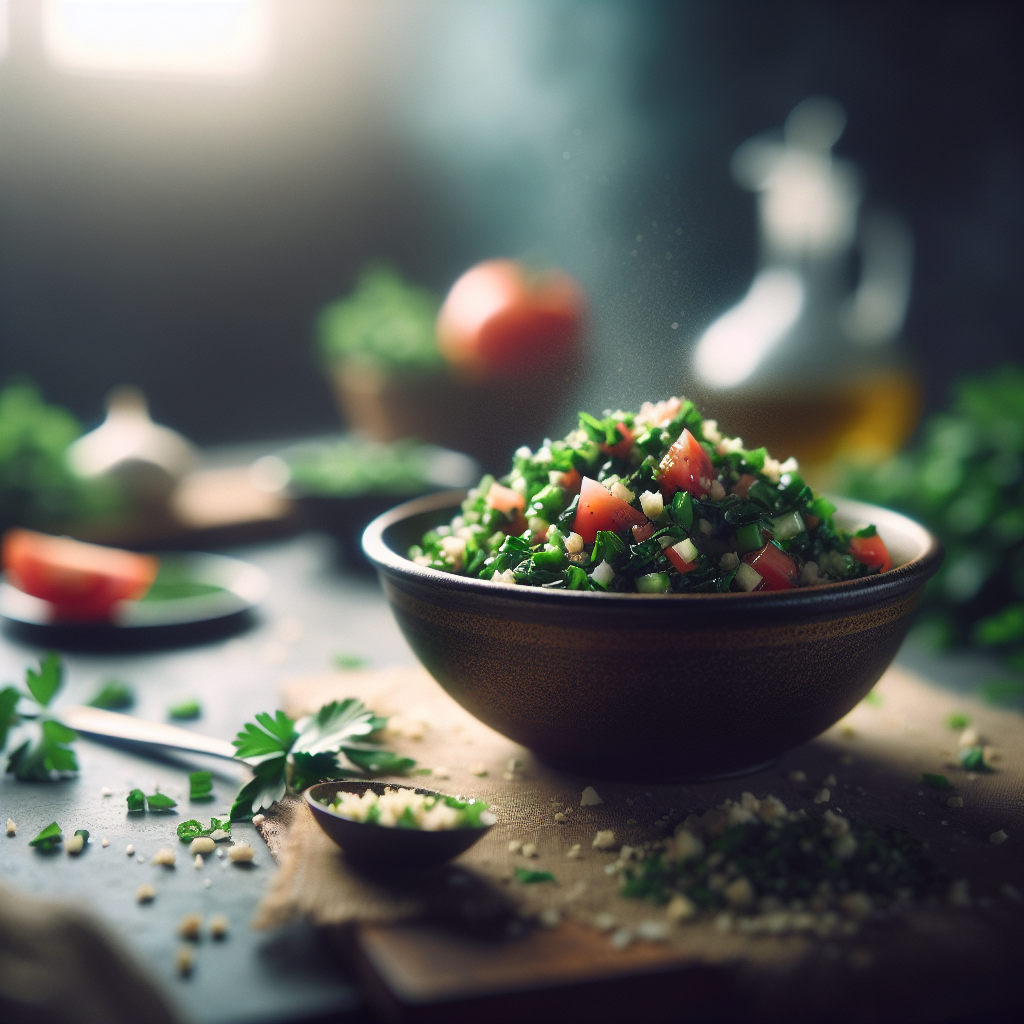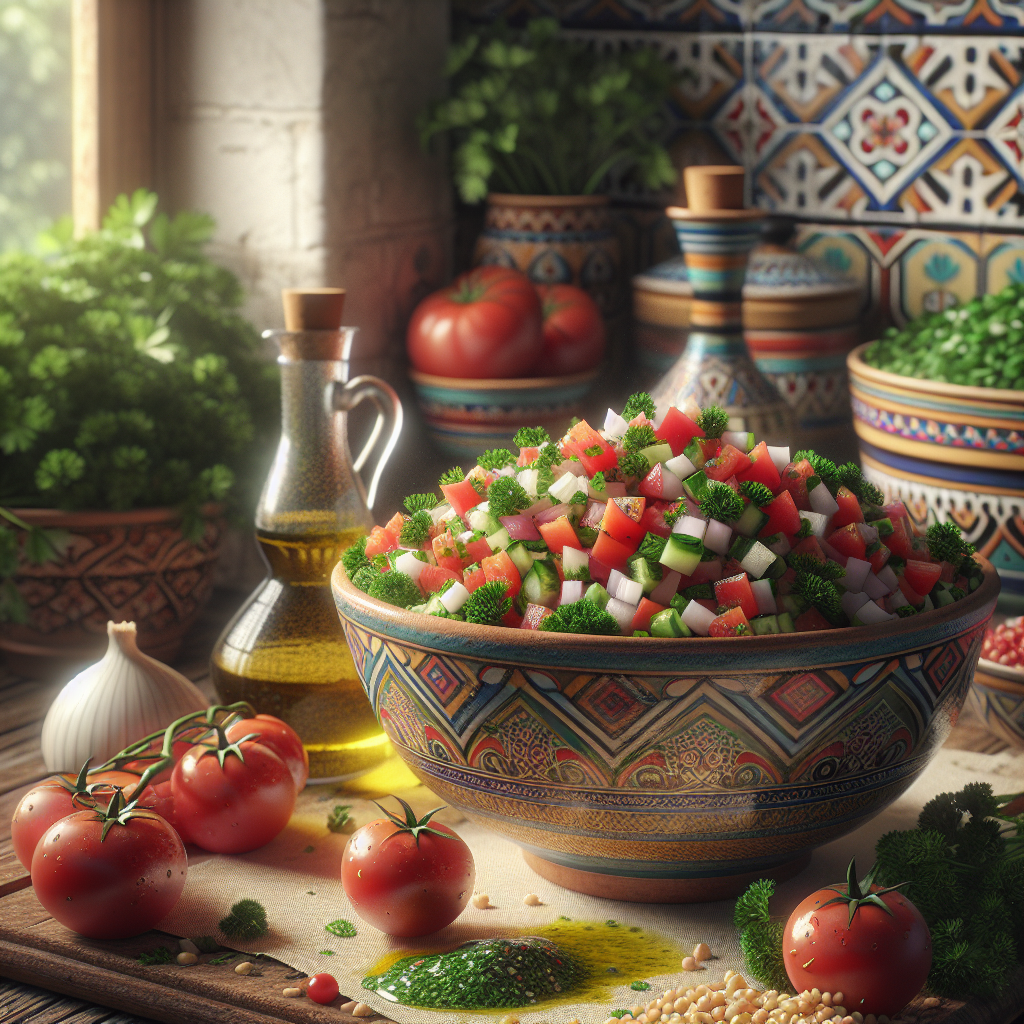Bite into a fresh, vibrant mix of finely chopped herbs, juicy tomatoes, and perfectly seasoned grains. That’s the essence of Tabbouleh, a beloved Middle Eastern salad that’s as much a feast for the eyes as it is for the palate. Its bright green hue, punctuated by reds and whites, reflects the freshness of its ingredients. Tabbouleh holds a special place in the hearts of many, symbolizing the rich culinary traditions of the Levant.


Recipe
- 1 cup fine bulgur wheat
- 2 bunches of fresh flat-leaf parsley, finely chopped (about 4 cups)
- 1/2 cup of fresh mint leaves, finely chopped
- 4 ripe tomatoes, diced
- 1 cucumber, diced
- 4 green onions, thinly sliced
- 1/3 cup of fresh lemon juice
- 1/3 cup of extra-virgin olive oil
- Salt and pepper to taste
- Soak the bulgur wheat in cold water for about 20-30 minutes until tender. Drain any excess water.
- Prep your vegetables and herbs by chopping them finely while the bulgur wheat is soaking.
- In a large mixing bowl, combine the softened bulgur, parsley, mint, tomatoes, cucumber, and green onions.
- Whisk together the lemon juice, olive oil, salt, and pepper in a small bowl.
- Pour the dressing over the salad and toss to coat everything well.
- Let the Tabbouleh rest in the fridge for at least 30 minutes to allow the flavors to meld together before serving.


Fun Facts about Tabbouleh
Tabbouleh has been a staple in Middle Eastern cuisine for centuries. Its origins trace back to the mountains of Lebanon and Syria, where it began as a simple way to use up an abundance of seasonal herbs. Over time, Tabbouleh spread across the Arab world and even beyond, gaining international popularity.
Tabbouleh is incredibly economical. The main ingredients are fresh herbs, tomatoes, and bulgur wheat—all of which are affordable and commonly available. This dish shows how simple, wholesome ingredients can produce a meal that’s nourishing and flavorful.
Typically served as part of a mezze, a selection of small dishes in the Middle East, Tabbouleh also works great as a side dish or light meal, especially in the warm months when you might want something cool and satisfying.
Digging into the health benefits, Tabbouleh is full of nutrition. The parsley provides vitamins C and A, while the bulgur wheat gives a healthy helping of dietary fiber. Additionally, the olive oil contributes healthy fats. This dish not only tastes great but supports a balanced diet.
While the traditional recipe uses bulgur wheat, there are modern variations that include quinoa, couscous, and even cauliflower rice for those seeking gluten-free or lower-carb options. Each variation introduces a different texture and flavor, making Tabbouleh adaptable to your preferences.
Tabbouleh brings people together and represents the rich culinary heritage of the Middle East. Next time you’re searching for a healthy, flavorful addition to your meal, consider making Tabbouleh. It might just become a regular in your menu.

